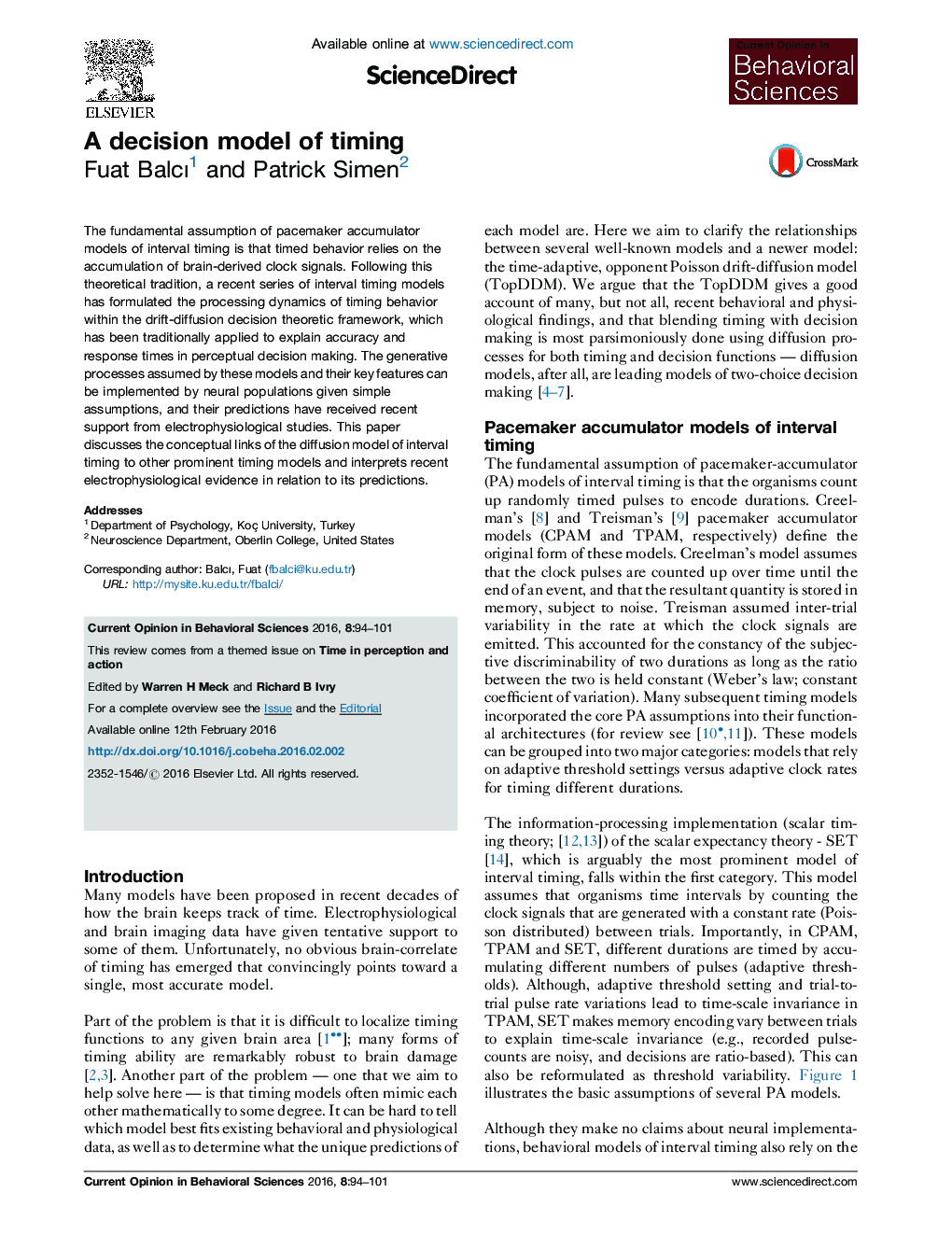| Article ID | Journal | Published Year | Pages | File Type |
|---|---|---|---|---|
| 6260490 | Current Opinion in Behavioral Sciences | 2016 | 8 Pages |
â¢A diffusion model used in decision making research also captures timing behavior.â¢Its predictions are supported by behavioral evidence.â¢Recent neurophysiological data support its implementation by populations of neurons.
The fundamental assumption of pacemaker accumulator models of interval timing is that timed behavior relies on the accumulation of brain-derived clock signals. Following this theoretical tradition, a recent series of interval timing models has formulated the processing dynamics of timing behavior within the drift-diffusion decision theoretic framework, which has been traditionally applied to explain accuracy and response times in perceptual decision making. The generative processes assumed by these models and their key features can be implemented by neural populations given simple assumptions, and their predictions have received recent support from electrophysiological studies. This paper discusses the conceptual links of the diffusion model of interval timing to other prominent timing models and interprets recent electrophysiological evidence in relation to its predictions.
